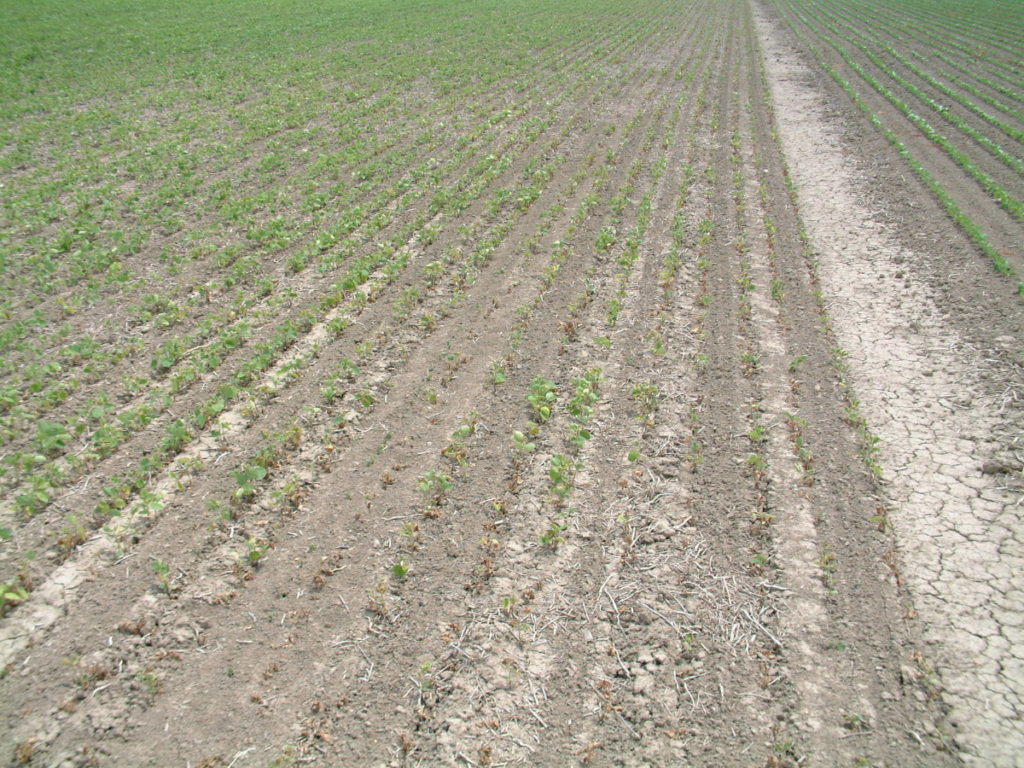Pesticide spray drift is the aerial movement and unintentional deposit of pesticide outside the target area. Spray drift has many negative impacts, including:
- less product being deposited on the target, resulting in reduced efficacy
- financial loss associated with wasted pesticide and time
- the risk of damage to human health, susceptible plants (e.g. adjacent crops), non-target organisms (e.g. wild and domestic animals, pollinating insects), the environment and property
Drift cannot be entirely eliminated, but spray operators can greatly reduce the potential for pesticide drift. Research and modeling have shown that the three biggest impacts on particle drift are:
- cross-wind speed
- boom height (i.e. release height)
- nozzle size (i.e. mean droplet size)
The following factors also affect particle drift:
- operating pressure (increasing pressure reduces droplet size)
- ground speed (higher ground speeds increase drift, especially if driving into the wind)
- High temperatures and low relative humidity cause droplets to become smaller due to evaporation
Therefore, the potential for pesticide drift can be greatly reduced by:
- lowering the boom to the lowest practicable height (e.g. ~50 cm from target or top of crop)
- using the coarsest effective droplet size, generally achieved through the use of air induction nozzles and higher spray volumes
- observing labelled buffer zones and recommended sprayer settings
- spraying when wind speeds are light to moderate and moving away from sensitive crop, landscape or environmental areas. Planting windbreaks can help manage wind.
- changing sprayer settings if the wind increases during spraying or halting the job until conditions improve
Anyone using pesticides is responsible for their safe application. Every year, the Pesticides Act requires that licensed spray applicators carry a specialized liability insurance policy that provides appropriate coverage for their business. Operators who work on a “for hire” basis (e.g. a licensed spray applicator) or away from their own farm operation will need additional coverage. Where drift damages adjacent crops, insurance adjustors generally ask the following questions:
- Was the damage to the applicator’s own crop? If so, it is unlikely that there will be coverage under any insurance policy
- Was the damage to a neighbour’s property? If so, the applicator’s liability policy may respond
- Was the product being applied according to label directions?
If you suspect your crops or property have been damaged by pesticide drift, follow these steps:
- Diagnose the problem: many other factors can cause symptoms that appear to be herbicide drift. Look for evidence of weed damage, damage patterns and evidence of nearby spray application.
- Contact the appropriate people: Talk to your neighbour or the sprayer operator to find out what was sprayed, when it was applied, (and who did the application).
- Contact your regional Ministry of the Environment office – MOE officers can do a site visit, take samples of tissue and soil, and have them analyzed for the suspect herbicides. Herbicide residues degrade very quickly, so sampling must occur as soon as possible. Contact the nearest regional MOE district office or call the Spills Action Centre at toll free: 1-800-268-6060. (Ministry locations are available at www.ontario.ca/environment or in the Blue Pages of the telephone directory).Where appropriate, the offending applicator may face charges under the Pesticide Act.
- Contact your property and crop insurance insurance adjustors, and advise the applicator to contact theirs.
- Document all details of the problem: This includes your spray records, weather data, photographs with times and locations.
- Document loss: Find a similar planting – same age, cultivar, rootstock, etc. At harvest time, you will need to document yields and quality from the damaged area, and from an undamaged area. For perennial crops like vineyards, orchards, asparagus, berries, etc., it will be necessary to document the effects for several years after the damage occurred. Be sure to note any impacts on vigour and cold hardiness.
For more information about pesticide drift, go to:
http://sprayers101.ca/additional-information/spray-drift/
Always follow the pesticide label and STOP DRIFT BEFORE IT STARTS!

